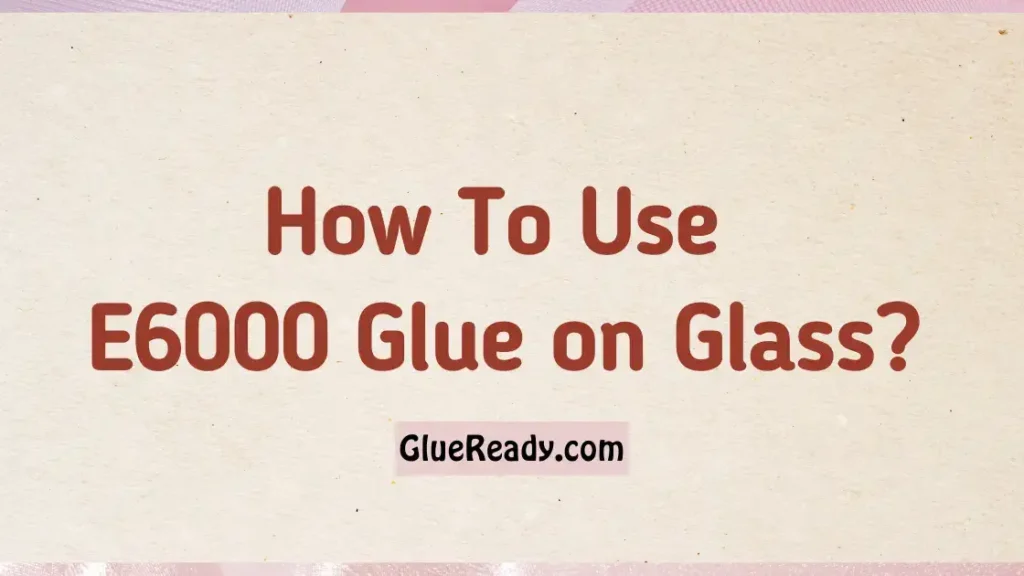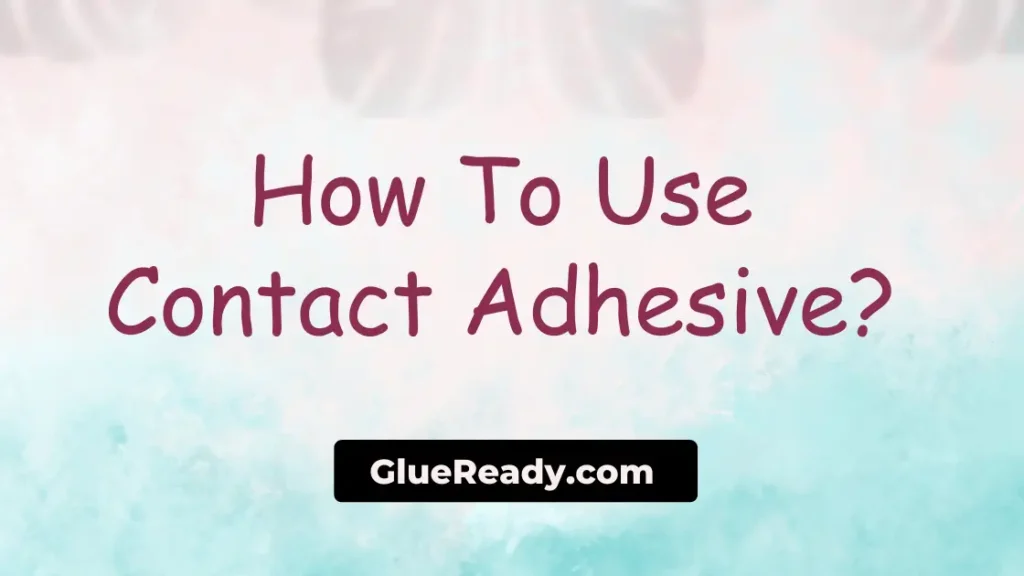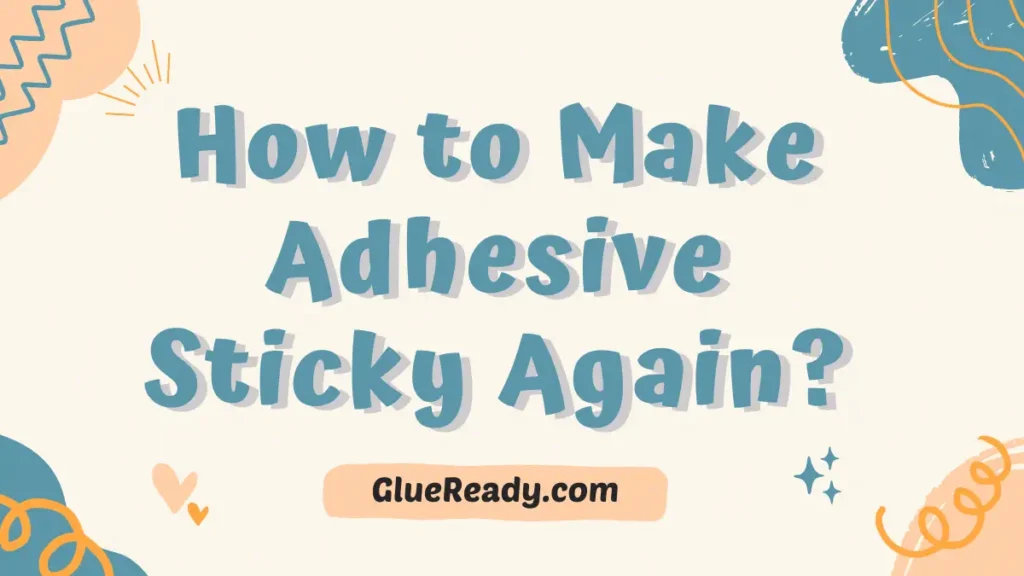How To Use E6000 Glue on Fabric?
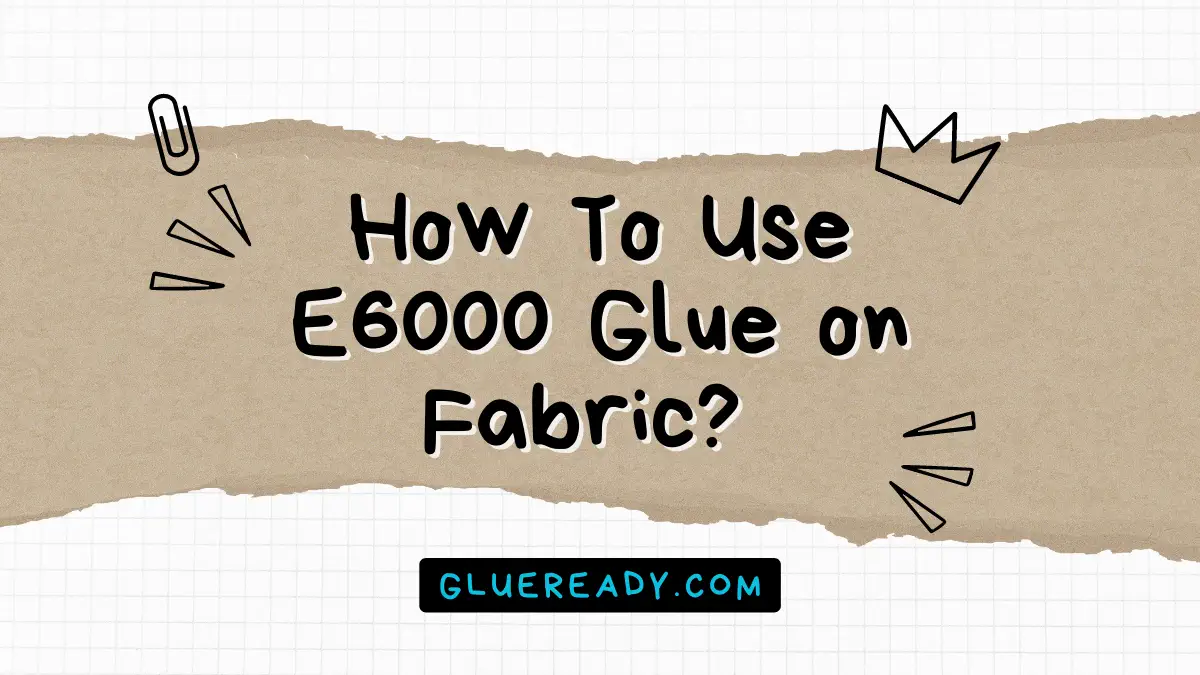
E6000 glue is a versatile and durable adhesive that can bond various materials, including fabric. It’s ideal for DIY projects and repairs that require a strong and waterproof bond.
Whether you want to embellish your clothes with crystals, beads, or sequins or fix a tear or hole in your fabric, E6000 glue can help you achieve your desired results.
In this article, I will show you how to use E6000 glue on fabric safely and effectively.
Read More: E6000 vs Super Glue
Can You Use E6000 on Fabric?
Yes, you can use E6000 on fabric. It’s a common practice nowadays. Among other great properties, E6000 is safe to use under moisture conditions.
So, you can use a washer or dryer on the glued fabric, and the glue won’t degrade. It’s also relatively strong and permanent. So, it’s useful for customer trials as well.
The strength can vary differently on various types of fabric. It’s seen that for sheer fabrics like chiffon and laces, gluing can be tricky, but it stays stronger.
On the contrary, it’s easy to use on uniform clothes like satins, where strength is slightly less but still good enough for commercial use.
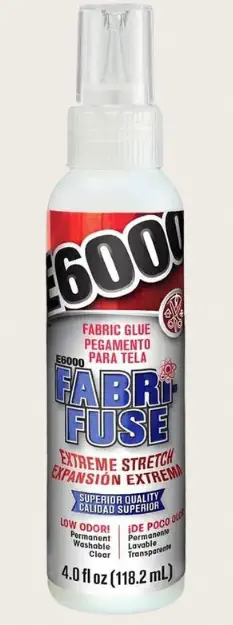
What You’ll Need to Use E6000 Glue on Fabric
To use E6000 glue on fabric, you’ll need the following items:
- E6000 glue: You can choose from clear, white, or black varieties, depending on your preference and the color of your fabric. Clear glue is recommended for most fabrics as it dries transparently and won’t show up on the surface. You can also use E6000 Fabri-Fuse Fabric Glue, which is specially designed for fabric applications.
- A spare piece of fabric: You’ll need this to test the glue and make sure it flows smoothly and doesn’t clog the nozzle.
- A needle: You’ll need this to clear the nozzle if it gets jammed or to apply small amounts of glue to precise areas.
- A tweezer: You’ll need this to hold small items like crystals or beads and press them onto the glue.
- A silicon mat: You’ll need this to protect your work surface from glue stains and spills. You can also use wax paper or cardboard instead.
- The items you want to glue: These can be anything from fabric pieces, designs, patches, buttons, zippers, ribbons, lace, etc.
How to Use E6000 Glue on Fabric
The following simple steps will guide you through the process of using E6000 glue on fabric when you have all the required items:
Step 1: Prepare the Fabric
To ensure a strong bond, prepare the fabric surfaces properly before applying the glue. Start by cleaning the fabric to remove any dirt, dust, or stains that could hinder adhesion.
For stubborn stains, gently dab the area with a mild detergent or spot cleaner, and let it dry completely before proceeding.
Step 2: Test the Glue
Take a piece of fabric and test the glue on it. Squeeze a small drop of glue onto the fabric and see how it flows and dries.
If the glue doesn’t come out easily, use a needle to poke through the nozzle and clear the passage.
Whenever glue is coming out too fast or too much, release some pressure from the container and remove any excess glue with a paper towel.
Step 3: Put the Glue on the Fabric
Apply the glue on the fabric where you want to attach an item. For small items like crystals or beads, use a needle or a tweezer to apply a tiny drop of glue on each point where you want them.
For larger items or designs, squeeze the container gently and make a line or curve with the glue along the edges or contours of the item.
Don’t apply too much glue, as it may ooze out from the sides and create a mess.

Step 4: Attach the Item to the Fabric
Press the item firmly onto the glue and hold it for a few seconds. Use a tweezer or your fingers to position the item correctly and press it down onto the glue.
Make sure there are no air bubbles or gaps between the item and the fabric. If some glue oozes out from the sides, wipe it off with a paper towel or a cotton swab before it dries.
Step 5: Let the Glue to Dry Completely
Be sure to let the fabric dry for at least 24 hours before washing or wearing it. Place the glued fabric on a flat surface and let it air dry in a well-ventilated area.
Don’t expose it to direct sunlight or heat, as it may affect the bond quality. Avoid touching or moving the glued items until they are fully cured.
Step 6: Store the Glue Properly
When you are done using the glue, make sure the cap is tight and store it somewhere cool and dry afterward. You can use a needle to clear the nozzle if it gets clogged. Keep it out of reach of children and pets.
Read More: Liquid Fusion Glue vs E6000
How to Remove E6000 Glue from Fabric
E6000 glue is very strong and permanent, so removing it from fabric can be challenging and risky.
It may damage or discolor the fabric in the process, so be careful and test it on a hidden area first. Here are some possible ways to remove E6000 glue from fabric:
Remove E6000 Glue with Acetone
Acetone is a solvent that can dissolve E6000 glue, but it may also harm some fabrics.
Apply some acetone on a cotton ball or a paper towel and dab it on the glued area. Then use an old toothbrush to scrub off the glue gently. Repeat until all the glue is removed.
Remove E6000 Glue using Rubbing Alcohol
Rubbing alcohol is another solvent that can loosen E6000 glue, but it may also fade some fabrics.
Use a cotton swab to rub some rubbing alcohol on the glue. Then use another cotton swab to wipe off the glue gently. Repeat until all the glue is removed.
Remove E6000 Glue with Soap and Hot Water
Use hot water and soap. Hot water and soap can soften E6000 glue and make it easier to peel off, but it may also shrink some fabrics.
Soak the glued area in hot water for about 15 minutes, and then add some soap or detergent. Then use your fingers or a blunt knife to peel off the glue gently. Repeat until all the glue is removed.
Read More: Fabric Glue vs Sewing
Frequently Asked Questions
How Long Does E6000 Take to Dry on Fabric?
E6000 glue takes about 5 to 10 minutes to dry to the touch and about 24 hours to 72 hours to dry completely on the fabric.
Is E6000 Permanent on Fabric?
Yes, E6000 is permanent on fabric. It provides a strong and waterproof bond that dries clear and is washable. The bond of this glue allows fabrics to stretch, which is essential.
Can You Use Regular E6000 on Fabric?
Yes, you can use regular E6000 on fabric. It works on different materials, from fabric to glass. It will bond fabrics like cotton and polyester and can be used on various materials.
Final Thoughts
E6000 glue is a great adhesive for fabric projects and repairs, as it can bond various materials and withstand washing and dry cleaning.
However, there is also a specially designed E6000 Fabri-Fuse glue for fabric, which offers a waterproof, elastic, and flexible bond. You may want to use that instead of the regular E6000 for better results.
However, it can also be tricky to use and remove, so you need to be careful and follow the instructions properly. With some practice and patience, you can use E6000 glue on fabric to create beautiful and durable items.
Hopefully, this article about “how to use E6000 glue on fabric” will help you in that regard. Happy crafting!


